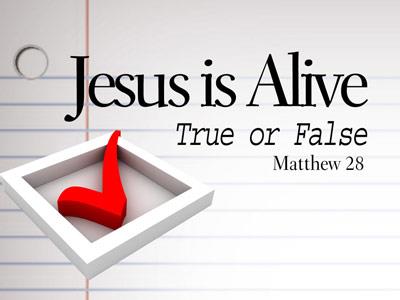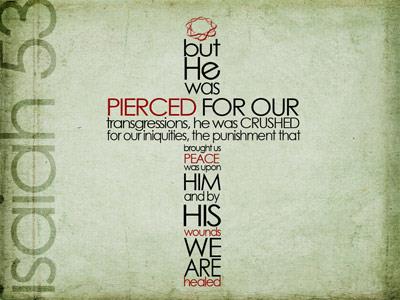-
The Da Vinci Code: The Humanity Of Christ Series
Contributed by Kerry Bauman on Nov 28, 2017 (message contributor)
Summary: What does it mean to say that Jesus was fully human? Was he married? Did he have a family. Was He a sinner just the like the rest of us? This sermon seeks to answer these questions in light of the claims of Dan Brown’s book, The DaVinci Code
Introduction: In preparation for the spiritual tsunami that is coming on May 19th with the release of the movie, The DaVinci Code, we began last week, to look at the first of three claims that form the basis for the ideas found in Dan Brown’s book. The message focused on the trustworthiness of the Bible vs. other ancient writings, specifically "The Gnostic Gospels." I trust that I was able to present the information in a way that was not too confusing for you. I am very aware that ’a mist in the pulpit is a fog in the pew.’ This calls to mind an excerpt from an article about a power outage in a large city that brought some confusion to the readership. The reporter wrote, "During the power failure many people complained about having gotten stuck for hours on the escalators." (Don’t worry, it took a little bit for my kids to get it too, but when they did they laughed...uncontrollably).
Just to jog your memory, we discovered that Brown’s ideas, taken from "The Gnostic Gospels," were heavily influenced by Greek philosophy especially that of Plato. We looked at three reasons why they should not be accepted as true historical accounts of 1st century events involving the life of Christ. (1) They were not considered Christian writings at all by the church fathers. This is important because one of the claims of the DaVinci Code is that until 325AD Jesus was viewed by His followers as a mortal prophet (DaVinci Code, p. 233). This means that when we check the historical record, we should find no one contesting the ideas contained in the Gnostic Gospels until three centuries after Christ. This simply isn’t the case. When we take a closer look we discover that the early church fathers often wrote lengthy essays, and even books, to refute these claims. (2) They were not authored by the Apostles or their contemporaries. The names attached to these writings were borrowed to give their content greater credibility. (3) They were written nearly 200 years after Jesus. The source for much of their information was a secret divine knowledge that was available to only the spiritually elite and that could not be contested by anyone else. In contrast, the Gospels were authored either by apostles, who themselves were eyewitnesses of the life of Christ (See 2 Peter 1:16) or close associates who received their testimony firsthand (See Luke 1:1-2). Further they enjoyed widespread acceptance by Christian churches more than 150 years before the Council of Nicea, when the supposed cover-up actually took place.
As I mentioned earlier, there are three subjects that we’re going to address in this series. Next week, on Easter morning, we’ll take on the last one, which obviously has great implications to us, especially as we prepare to celebrate the resurrection: "Was Jesus God the Son dwelling in human flesh or was He nothing more than a man who, according to Dan Brown, ’walked the earth and inspired millions to better lives?’"
Today I’d like us to consider another claim found in the DaVinci Code. One charge of the DaVinci Code is that the Bible was compiled and edited by men at the Council of Nicea who possessed a political agenda given to them by the Emperor Constantine--to promote the divinity of the man Jesus Christ and use His influence to solidify their own power base (DaVinci Code, p.234). Jesus, according to Brown’s research was nothing more than a man who engaged in all the activities that any other Jewish man would from that era. Granted, He was from the royal line of David, but he was a man, nothing more and nothing less. What does this mean for the author? Here’s an excerpt that summarizes his theory from page 249: "Behold (Sir Leigh Teabing speaking), the greatest cover-up in human history. Not only was Christ married, but He was a father. My dear, Mary Magdalene was the Holy Vessel (i.e. The Holy Grail). She was the chalice that bore the royal bloodline of Jesus Christ." In case you missed it, Brown argues that Jesus was married to Mary of Magdela and fathered children by her, who we are told later, became part of the royal Merovingian ancestry (See DaVinci Code, p. 257) in France that still survives to this day.
Now before we dismiss his comments completely, we have to acknowledge that there is a smidgen of truth in his claim. We as Christians also believe in the humanity of Christ. It is clearly taught in the Scripture (See John 1:1, 14; 1 John 4:2) and is one of the assertions of the Nicene Creed: (Jesus) came down from heaven, and was incarnate (in flesh) by the Holy Spirit of the Virgin Mary, and was made man." Certainly the Jews do as well. They recognized His humanity when they shouted on the first Palm Sunday, "Hosanna (A Hebrew expression meaning "Save," it later became an expression of praise) to the Son of David! Blessed is he who comes in the name of the Lord! Hosanna in the highest!" The Messiah had come and Israel was looking for her deliverance. The Jews had always believed that God would provide a Messiah to deliver them from the rule and oppression of their enemies (See Psalm 2:1-9), but they only ever saw him as fully human. How do we know this is what they were thinking? The following verses are the giveaway. We’re told, "When Jesus entered Jerusalem the whole city was stirred and asked, "Who is this?" The crowds answered, "This is Jesus the prophet from Nazareth in Galilee." A prophet, in the eyes of Israel, was a holy man, yes, but still a man whose task was to speak for God to His people. This means that everyone, Dan Brown, Christians and Jews, seem to agree on the humanity of Christ!

 Sermon Central
Sermon Central



